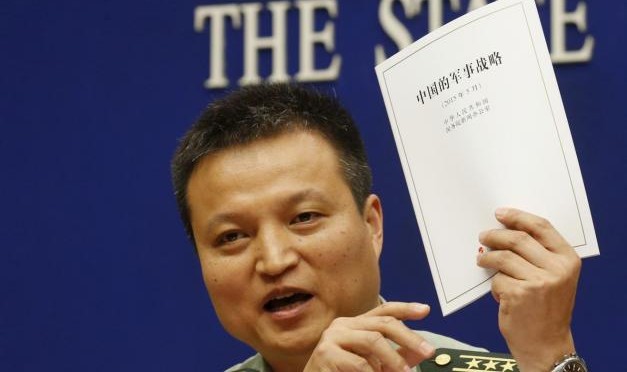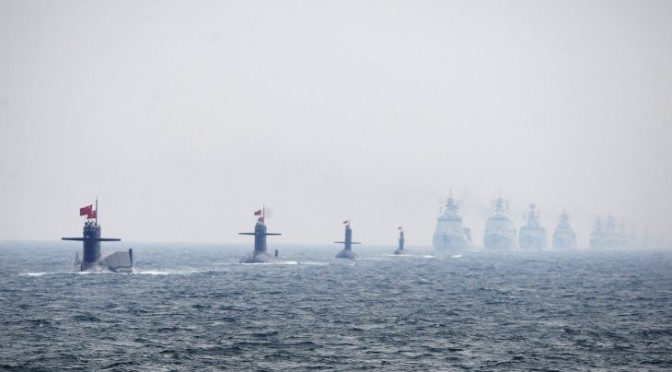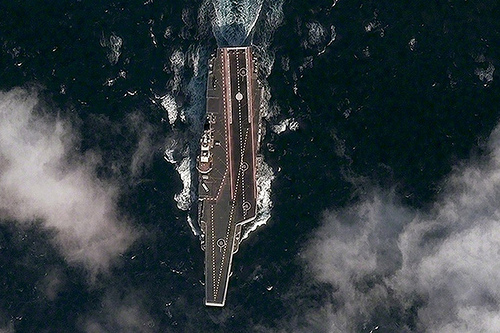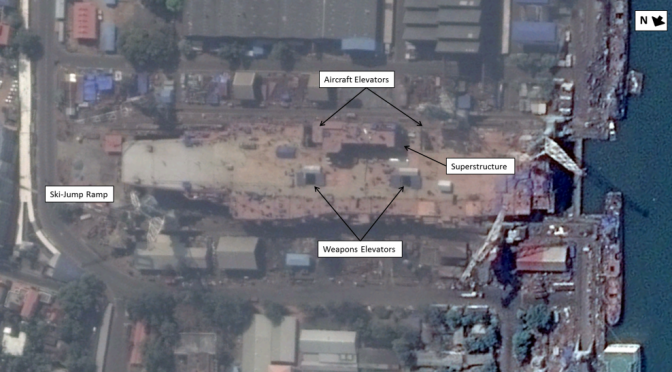This article by Joe McReynolds originally appeared in the Jamestown Foundation’s China Brief and can be found in its original form here.
When tracking the development of China’s military capabilities, Western People’s Liberation Army (PLA) watchers encounter frequent challenges in determining which data sources they should draw upon for their analysis. Purely quantitative measurements of the PLA’s nominal force strength, though often valuable, may not provide insights into challenges the PLA faces in the real-world execution of its missions, while writings on Chinese military strategy by any given PLA author may not reflect the PLA’s broader institutional stance or limitations imposed by inadequate material capabilities.
If one analyzes China’s approach to network warfare in particular, these challenges are multiplied. [1] “Cyber weapons” are not publicly viewable and quantifiable in the same sense as submarines or aircraft, and often the PLA will not admit even their existence. And just as in U.S. discussions of “cyber war,” charlatans and self-promoters abound; although it is easy to find writings by PLA officers theorizing loosely and grandiosely about information warfare, they are often speaking only for themselves rather than for their respective military institutions.
Roughly once every 15 years or so, however, the PLA’s influential Academy of Military Sciences (AMS) issues a new edition of The Science of Military Strategy (SMS), a comprehensive, generally authoritative study of the PLA’s evolving strategic thought that escapes much (though not all) of the shortcomings of other PLA original sources. The AMS plays a much more central role in the formation of China’s military strategic thought than its academic counterparts in the United States, and the SMS is its flagship external product. It is the result of dozens of high-level PLA authors working together over a period of years to produce a heavily vetted consensus document.
As a result, each new edition of the SMS is closely scrutinized by China hands in the West for the valuable insights it provides into the evolving thinking of the PLA on a range of strategically important topics. The newest edition of the Science of Military Strategy has recently been released, with Western PLA analysts beginning to obtain copies since summer 2014. Although no English translation is currently available, a book forthcoming this year from The Jamestown Foundation, China’s Evolving Military Strategy, will aim to convey the central insights contained within this important new document to Western policy and analysis audiences.
The SMS is a particularly valuable resource for understanding China’s evolving strategic approach to network warfare. A study that aims to be as comprehensive as the SMS cannot afford to ignore network warfare due to the centrality of information warfare to modern war-fighting, and the process by which the SMS is written ensures that the information analysts receive on network warfare represents something approaching an authoritative consensus within the PLA. The following are the most important revelations from the new SMS on the PLA’s approach to network warfare:
The Fig Leaf is Gone: China’s Network Warfare Forces Are Now Explicitly Acknowledged
In recent years, official PLA publications have repeatedly issued blanket denials of offensive activities in the network domain, such as that “the Chinese military has never supported any hacker attack or hacking activities” (China Armed Forces / 中国军队, No. 20, 2013) even as the evidence conclusively attributing various large-scale cyber intrusions to China has continued to mount. The release of the new SMSremoves that barest fig leaf of plausible deniability. The SMS not only explicitly acknowledges that China has built up network attack forces, but divides them into three types:
- The PLA’s “specialized military network warfare forces” (军队专业网络战力量), which are military operational units specially employed for carrying out network attack and defense
- “PLA-authorized forces” (授权力量), which are teams of network warfare specialists in civilian organizations such as the Ministry of State Security (MSS), the Ministry of Public Security (MPS) and others that have been authorized by the military to carry out network warfare operations
- “Non-governmental forces” (民间力量), which are external entities that spontaneously engage in network attack and defense, but can be organized and mobilized for network warfare operations
This is the first time an explicit acknowledgement was made of the existence of China’s secretive network attack forces from the Chinese side, and it is particularly noteworthy that this acknowledgement extends beyond the military domain and into the network warfare capabilities of civilian government agencies. The AMS’s statement that China’s civilian network attack forces operate under the PLA’s “authorization” may speak to an ongoing power struggle within the Chinese system between the PLA’s leadership and the aforementioned civilian government organs to determine who truly oversees Chinese actions in cyberspace; as unprecedented as it is to have the Chinese military acknowledge the existence of its network attack forces, having a PLA publication be the first to announce the existence of such secretive forces inside the civilian government is particularly unusual, and may represent an attempt to “plant the flag” for the PLA.

This could also seriously complicate China’s international efforts at law enforcement cooperation on cybercrime. The MPS, which is more or less “China’s FBI,” has assisted more than 50 countries in investigating over a thousand cases of cyber-crime in the past decade, and China has established bilateral law enforcement cooperation with over 30 countries (including the United States, the United Kingdom, Germany and Russia), often including a cyber-crime component (China Armed Forces, 2013). With the Chinese now explicitly acknowledging that the MPS has network warfare forces stationed within it, the United States and other targets of Chinese state-sponsored hacking will have to weigh carefully whether cooperation with the MPS on cyber-crime is worth the risks.
Blurring the Divide Between the Military and Civilian Realms
In keeping with Chinese President Xi Jinping’s recent statements that “without network security there is no national security” (PLA Daily, October 7, 2014), the authors of the new SMS break from the previous edition’s vague talk of overall information warfare objectives to concretely assert the centrality of cyberspace power to China’s overall ability to project national power, engage in strategic deterrence, and defend itself in a conflict. However, this “network domain,” which has become so central to the PLA’s warfighting, exists primarily as civilian infrastructure and is used globally for civilian purposes. As a result, although development of elite network warfare personnel remains central to the PLA’s ongoing cyber mission, the authors of the SMS focus an unusual amount of their energies examining the importance of civilian information technology and the civilian Internet to network warfare.
First and foremost, the authors believe that civilian infrastructure in foreign countries can be targeted more freely with network warfare than with conventional weapons, without provoking the degree of conflict escalation that a conventional attack on civilian targets would. This echoes an idea known as “unrestricted network warfare” long advocated by some of the PLA’s more hawkish network warfare theorists, and its presence in an authoritative work such as the SMS suggests that more aggressive voices may be gaining ground in the PLA’s internal deliberations on network warfare strategy (See Dong Qingling and Dai Changzheng, “Deterrence in the Network Space: Is Retaliation Feasible?”). To put it simply, they believe that the old playground sports adage of “no blood, no foul” applies to network warfare, even if the attack in question has debilitating effects on civilian infrastructure, and in a conflict scenario they may advocate that the PLA chooses its targets accordingly.
Second, the authors of the SMS acknowledge that China’s civilian information technology (IT) industry functions as a core component of China’s overall power in cyberspace. Since the development of China’s network warfare capabilities relies heavily on human talent and the civilian IT industry is where the bulk of China’s IT talent is found, PLA analysts believe that civilian industry will continue to serve as an important source of technical talent and human capital for the PLA’s network warfare operations to a degree that is disproportionate to the PLA’s reliance on civilian industry in other realms of warfare. The authors also emphasize the fact that despite recent advances in Chinese IT, key state-of-the-art networking technologies are still advanced primarily in the West, and the bulk of the Internet’s core architecture is controlled by the United States and its allies. Thus, what the West views as the neutral “status quo” of the network domain is, to China, an intolerable “network hegemony” (????) imposed by the United States and others. Based on the increasing prominence of these sentiments within the PLA, the prediction one sometimes hears in the West—that China’s IT development will one day transform it into a “mature” partner interested primarily in cyberspace cooperation to preserve our “mutual” interests—appears likely be overly optimistic. The PLA’s stated intentions to mobilize its civilian IT industry as a component of national power in both peacetime and wartime must be accounted for in the calculus of determining whether any given Sino-U.S. information security cooperation is in the United States’ national interest.
“Salami-Slicing” in Cyberspace and Planning for Resilience in the Face of the Inevitable
The SMS authors also focus heavily on the central role of peacetime “network reconnaissance”—that is, the technical penetration and monitoring of an adversary’s networks—in developing the PLA’s ability to engage in wartime network operations. As the SMS puts it, since the technical principles underlying successful penetrations of an adversary’s systems are essentially the same whether the objective is reconnaissance or active disruption, at the appropriate moment “one need only press a button” to switch from reconnaissance to attack.
Despite this ambiguity of intent, since network reconnaissance is both non-destructive (at least initially) and widely engaged in by all nations for the purposes of espionage, the SMS authors believe it has been clearly demonstrated that the act of network reconnaissance alone is unlikely to lead to escalation or the outbreak of war. As a result, PLA strategists appear to have arrived at a strategic understanding of peacetime network operations similar to China’s “salami slicing” tactics for asserting control of disputed islands in the South China Sea: a pattern of taking actions during peacetime that incrementally put China into a superior tactical position should conflict ever break out but that, which while provocative and unwelcomed by China’s neighbors, are unlikely to lead to direct conflict in and of themselves. If conflict eventually does break out, China will be in a better position than they otherwise would; if it does not, they will have incrementally gained much of what they desire without a fight.
PLA analysts understand, however, that network reconnaissance is not by any means one-sided, and believe that just as they are actively attempting to penetrate the networks of their adversaries, the PLA’s networks are likely being repeatedly breached as well. Furthermore, they argue that since China’s “main strategic opponent” (their euphemistic way of referring to the United States) has superior network warfare capabilities, the strict balance of power in a network-domain conflict would not necessarily tilt in China’s favor. As a result, the SMS emphasizes that the PLA must plan for a future of network warfare in which its defenses will inevitably be breached, military networks will at times be taken down by hostile adversaries, and China’s modernized C4ISR systems cannot be fully relied upon. [2] Although they do call for a major effort to strengthen China’s network defenses, this is undertaken in the hope that those defenses will not catastrophically fail, without any expectation that they will fully withstand outside attacks.
For Western military analysts, this line of thinking should trigger particular attention and concern. With China preparing for conflict in the network domain under the assumption that from the outset their information networks will quickly be heavily degraded and only partially functional, there will be a strong incentive in a conflict for the PLA to push the envelope of what is globally considered legitimate in areas such as anti-satellite warfare. The intersection of U.S. technological reliance on space-based C4ISR systems with its distance from East Asia will multiply this incentive, as China will (all other things equal) be able to do “more with less” in its immediate backyard.
Much of the focus by Western analysts when examining China’s approach to anti-access/area-denial (A2/AD), also known as “counter-intervention,” has centered on the physical realm of warfare, including the use of precision-guided munitions reliant on C4ISR. However, as the insights contained in the newSMS demonstrate, this discussion is fundamentally incomplete if it does not take into account China’s evolving approach to network and information warfare. Rightly or wrongly, many Chinese analysts believe that the United States currently possesses what they term a “no satellites, no fight” military force, and in a major conflict scenario they appear increasingly likely to put that presumption to the test.
Notes
- Rather than mirroring the United States’ ‘cyber’ concept, PLA writing speaks at the broadest level of the ‘information domain’ and ‘information warfare,’ with network, electromagnetic, psychological, and intelligence warfare each taking place as distinct components of that broader concept. The PLA concept of “network warfare” is roughly analogous to the current United States cyber concept, though not always identical in its details.
- C4ISR stands for command, control, computers, communication, intelligence, reconnaissance and surveillance.
Joe McReynolds is a Research Analyst at Defense Group Inc.’s Center for Intelligence Research and Analysis. His research interests primarily center on China’s approach to computer network warfare and defense science & technology development. Mr. McReynolds has previously worked with the Council on Foreign Relations and the Pacific Council for International Policy, and is a graduate of Georgetown University’s School of Foreign Service and Graduate Security Studies programs. He speaks and reads Chinese and Japanese, and has lived and studied in Nagoya, Guilin and Beijing.








